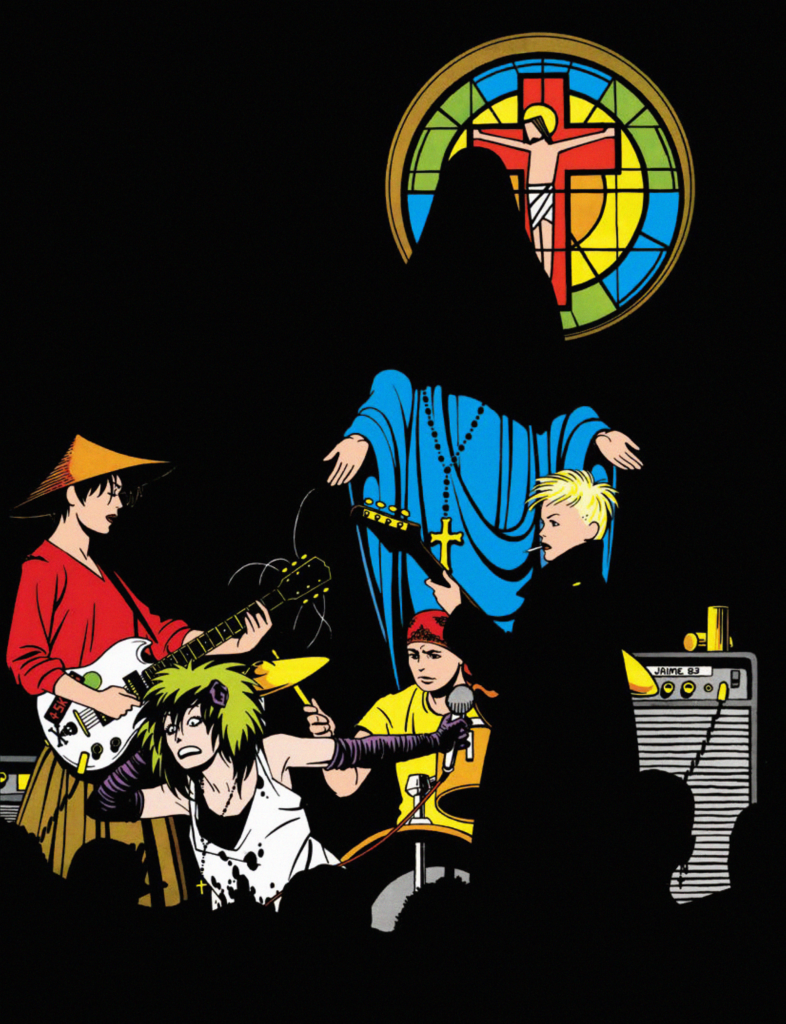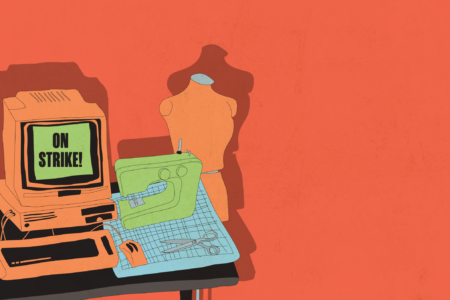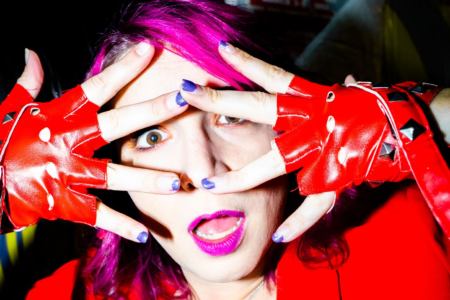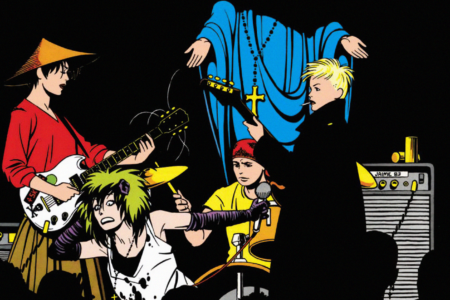 I came across Love and Rockets for the first time in my early 20s. The comic series from the California-born Hernandez brothers, Jaime, Gilbert and Mario, came recommended to me by my partner. I had just started digging into independent comics at the time. My first forays into Adrian Tomine and Julie Doucet courtesy of the BMV across from the school formerly known as Ryerson. As someone who looked up to female punk music icons and also struggled with her own Catholic faith, I felt like Love and Rockets was attuned to me and my sensibilities.
I came across Love and Rockets for the first time in my early 20s. The comic series from the California-born Hernandez brothers, Jaime, Gilbert and Mario, came recommended to me by my partner. I had just started digging into independent comics at the time. My first forays into Adrian Tomine and Julie Doucet courtesy of the BMV across from the school formerly known as Ryerson. As someone who looked up to female punk music icons and also struggled with her own Catholic faith, I felt like Love and Rockets was attuned to me and my sensibilities.
Prior to discovering indie and alt comics, the only female-led series I had read were ‘Betty & Veronica’ and tons of shoujo manga. While I continue to adore these comics to the present day, Love and Rockets was one of my first exposures to realistic stories about complex women, their problems, their desires and their relationships. The various storylines within the series are a pocket universe of punk rockers, day dreamers, lovers, losers, drifters, revolutionaries, housewives, artisans and anarchists. The cast are overwhelmingly women and the settings are largely within driving distance to the U.S. border (excluding the occasional detours to outer space or dinosaur times). The Hernandez brothers toy with the pastiche of daytime soaps as much as pulp sci-fi, all drawing inward to the conflicts of common life.
I got to follow the incredible female protagonists from ‘Locas,’ the lifelong misadventures of the punkers Hopey and Maggie, who filled me with admiration and a sense of familiarity for my own past and present friends. These stories made me feel like I could vicariously live the riot grrrl and punk experience through characters more audacious and more rebellious than myself.
Growing up in Brampton, Ontario (back when it was still considered a small city) and being a sheltered kid, these kinds of scenes were completely alien to me. I had to take the GO Train to Toronto to buy the ‘cool’ clothes on Queen West. I had a high school band with two other girls, covering Age of Electric and Pink Floyd songs, but our gigs never expanded beyond each other’s houses or the school music room. When I read these comics, I felt like I was looking into another world, one I wish I got to experience directly and often felt envious of.
In contrast, I recognized my own experience in the magical realism and repressed faith-based struggles depicted in ‘Palomar,’ chronicling the affairs within a fictional Mexican town. I eventually developed into a lapsed Catholic in my 20s, and so I began to seek out work that dealt with the fallout of being raised in that very particular faith. Comics from Robert Crumb, Chester Brown and Joe Matt. They were mainly focused on the internal shame and sexual repression inherent to many Catholic experiences, but coming across Gilbert Hernandez’ work was entirely different.
While there are some comparable similarities in regard to stigma and sexuality, ‘Palomar’ strongly focuses on the positive aspects of religion. Kind maternal figures are prevalent throughout the work, reminding me of the core tenets of kindness and love that I recall from Sunday school lessons. It illustrates that faith works best when it builds a community, instead of spurring insular penance. There is a much more earnest representation on these pages, ones that don’t dredge into easy jabs, cheap thrills and images that aren’t solely focused on the creators’ own sexual hang-ups.
Love and Rockets is one of those comic series that seems to be a touchstone for nearly everybody with any familiarity with indie comics. Even if you haven’t encountered the series itself, the art of the Hernandez brothers has permeated pop culture to a point where images from the comic almost have a life of their own. Nestled in cultural turf between slacker chic, Raymond Carver, MTV and NYT. The seminal series is celebrating its 40th anniversary, commemorated with a colossal, shiny new box set edition from Fantagraphics, who have published the series since 1982. The set contains 50 issues and thousands of pages. A daunting task made easier than ever.
The Hernandez Brothers started self-publishing Love and Rockets in 1981. Their mother was a lover and reader of comics. She introduced them to the medium, fostered their passion. She was a staple of their household while they began to conjure their own comics and stories. The eldest brother, Mario, encouraged his brothers that they should self-publish their comics. This first issue was sold at San Diego Comic-Con and by mail order. They were advertised in the back of fanzines, the preferred way for people to find indie comics and press back before the blog era. They submitted their first issue to the Comics Journal for review, and after a strong positive reception, they were offered to be published by Fantagraphics.
Love and Rockets is also one of those series where you can see the Hernandez brothers grow in their craft as artists and storytellers. They began as teenagers and went to publication in their early 20s, only continuing to mature from there. So organically and uncannily do the characters grow with their creators. Punks and shitkickers finding their home in the universe. I love to see the evolution of an artist, especially when their characters are afforded the opportunity to age with them. Many series are fully realized and contained, where the style doesn’t shift too much and they end within a couple of years, whereas Love and Rockets is a continuous, ever-growing endeavour. We have years of art and text to reflect on and can visually follow their journeys as creators.



